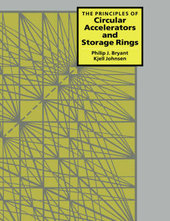
|
The Principles of Circular Accelerators and Storage Rings
Paperback / softback
Main Details
| Title |
The Principles of Circular Accelerators and Storage Rings
|
| Authors and Contributors |
By (author) Philip J. Bryant
|
|
By (author) Kjell Johnsen
|
| Physical Properties |
| Format:Paperback / softback | | Pages:384 | | Dimensions(mm): Height 246,Width 189 |
|
| Category/Genre | Atomic and molecular physics |
|---|
| ISBN/Barcode |
9780521619691
|
| Classifications | Dewey:539.73 |
|---|
| Audience | | Professional & Vocational | |
|---|
| Illustrations |
15 Halftones, unspecified; 140 Line drawings, unspecified
|
|
Publishing Details |
| Publisher |
Cambridge University Press
|
| Imprint |
Cambridge University Press
|
| Publication Date |
8 June 2005 |
| Publication Country |
United Kingdom
|
Description
This book is a basic introduction to the principles of circular particle accelerators and storage rings, for scientists, engineers and mathematicians. Particle accelerators used to be the exclusive province of physicists exploring the structure of the most fundamental constituents of matter. Nowadays, particle accelerators have also found uses as tools in many other areas, including materials science, chemistry, and medical science. Many people from these fields of study, as well as from particle physics, have learned about accelerators at various courses organised by CERN, the European Organisation for Nuclear Research which has established a reputation as the world's top accelerator facility. Kjell Johnsen and Phil Bryant, the authors of this book, are distinguished accelerator physicists who have also run the CERN Accelerator School. The text they present here starts with a historical introduction to the field and an outline of the basic concepts of particle acceleration and phase focusing. It goes on to give more details of how the transverse and longitudinal motions of the particle beams can be analysed, including treatments of lattice design, compensation schemes, transition crossing, and other radio frequency effects. The book will be an essential reference to anyone working with particle accelerators as a designer, operator or user, as well as being a good preparation for those intending to go to the frontiers of accelerator physics.
|